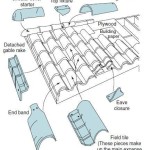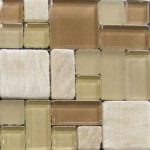Laying Vinyl Plank Flooring Over Ceramic Tiles: A Comprehensive Guide
Vinyl plank flooring has gained significant popularity as a durable, aesthetically versatile, and relatively affordable flooring option. One of its appealing characteristics is its potential for installation over existing subfloors, including ceramic tile. This article provides a comprehensive guide to laying vinyl plank flooring over ceramic tiles, outlining the necessary preparations, materials, installation techniques, and considerations for achieving a professional and long-lasting result.
Successfully installing vinyl plank flooring over ceramic tile hinges on careful preparation. Ignoring this step can lead to various issues, including unevenness, telegraphing of grout lines, and adhesive failure. The existing tile surface must be properly evaluated and prepared before any vinyl planks are laid.
Evaluating the Existing Ceramic Tile
A thorough assessment of the existing ceramic tile is the crucial first step. This evaluation determines the condition of the tiles and identifies any potential problems that need to be addressed before proceeding with the vinyl plank installation. The key aspects of this evaluation include:
Tile Integrity: The existing tiles must be firmly adhered to the subfloor. Loose, cracked, or chipped tiles must be repaired or replaced. Loose tiles will create unstable areas, which will transfer through the vinyl plank and potentially cause damage over time. Cracked tiles, even if seemingly stable, can propagate further cracks under the pressure of foot traffic and furniture. Chipped tiles create uneven surfaces, which can make the vinyl plank installation challenging and aesthetically unappealing.
Surface Levelness: The overall surface must be relatively level. Minor variations are often acceptable, but significant height differences between tiles or sections of the floor must be addressed. A self-leveling compound may be necessary to create a smooth and even surface. Significant undulations will cause the vinyl planks to flex and potentially separate at the seams. A long level, ideally six feet or longer, should be used to check for major deviations. Small imperfections can be identified and marked for later repair.
Grout Line Condition: The grout lines between the tiles must be inspected for damage or deterioration. Crumbling or missing grout needs to be repaired with new grout that matches the existing grout's color as closely as possible. Deteriorated grout can create voids which will ultimately lead to unevenness. Furthermore, the depth and width of the grout lines are significant. Deep or wide grout lines can telegraph through the vinyl plank, creating an undesirable texture on the finished floor. A leveling compound or skim coat may be needed to fill these grout lines.
Moisture Levels: The subfloor beneath the ceramic tile must be dry. Excessive moisture can lead to adhesive failure, mold growth, and warping of the vinyl planks. A moisture meter should be used to check the moisture content of the subfloor. If moisture levels are high, the source of the moisture must be identified and addressed before installing the vinyl plank flooring. Potential sources of moisture include leaks, condensation, or inadequate waterproofing.
Cleanliness: The surface must be thoroughly cleaned to remove any dirt, dust, grease, or other contaminants. These contaminants can interfere with the adhesion of the vinyl planks. Use a suitable cleaning solution, followed by a thorough rinsing and drying. A degreasing cleaner might be necessary in areas such as kitchens or entryways where grease and dirt are more likely to accumulate.
Once the evaluation is complete, a plan of action can be developed to address any identified issues. This may involve repairing or replacing tiles, leveling the surface, filling grout lines, and ensuring adequate cleanliness and dryness.
Preparing the Ceramic Tile Surface
Following the evaluation, the next step is to prepare the ceramic tile surface for the vinyl plank installation. This process involves addressing any imperfections and creating an even and stable base for the new flooring. The specific preparation techniques will depend on the findings of the initial evaluation.
Repairing or Replacing Damaged Tiles: Any loose, cracked, or chipped tiles must be repaired or replaced. Loose tiles can be re-adhered using a suitable thin-set mortar adhesive. Cracked or chipped tiles should be carefully removed and replaced with new tiles that match the existing ones as closely as possible. Ensure that the new tiles are properly seated and leveled with the surrounding tiles. Allow the adhesive to fully cure before proceeding.
Leveling the Surface: If the surface is uneven, a self-leveling compound can be used to create a smooth and even base. This compound is typically a cement-based mixture that is poured over the surface and allowed to flow and self-level. Follow the manufacturer's instructions carefully for mixing and application. Ensure that the compound is applied to the correct thickness to adequately level the surface. Multiple applications may be necessary for significant height differences. A spiked roller can be used to remove air bubbles and ensure a smooth finish. Allow the self-leveling compound to fully cure before proceeding.
Filling Grout Lines: Deep or wide grout lines can telegraph through the vinyl plank flooring, creating an undesirable texture. To prevent this, the grout lines can be filled with a cement-based patching compound or a skim coat of self-leveling compound. Apply the compound evenly over the grout lines, ensuring that they are completely filled. Use a wide trowel to feather the edges of the compound into the surrounding tile surface. Allow the compound to fully dry and sand it smooth to create a seamless transition between the tile and the grout lines.
Cleaning and Priming: After addressing any imperfections, thoroughly clean the surface to remove any dust, debris, or residue. A vacuum cleaner followed by a damp mop can be used. Allow the surface to dry completely before applying a bonding primer. A bonding primer will improve the adhesion of the vinyl plank flooring to the ceramic tile surface. Choose a primer that is specifically designed for use over non-porous surfaces like ceramic tile. Apply the primer according to the manufacturer's instructions and allow it to dry completely before proceeding with the vinyl plank installation.
Proper surface preparation is essential for a successful and long-lasting vinyl plank flooring installation. Taking the time to address any issues and create a smooth, level, and clean base will ensure that the vinyl planks adhere properly and provide a beautiful and durable flooring solution.
Installing the Vinyl Plank Flooring
With the ceramic tile surface properly prepared, the next step is installing the vinyl plank flooring. The specific installation techniques will vary depending on the type of vinyl plank flooring being used. There are generally two types of vinyl plank flooring: glue-down and click-lock.
Glue-Down Vinyl Plank Flooring: Glue-down vinyl plank flooring requires the use of an adhesive to bond the planks to the subfloor. This type of flooring is typically more durable and water-resistant than click-lock flooring, making it a good choice for high-traffic areas and areas prone to moisture. To install glue-down vinyl plank flooring, follow these steps:
Acclimation: Allow the vinyl planks to acclimate to the room's temperature and humidity for at least 48 hours before installation. This will help to prevent expansion and contraction of the planks after installation.
Layout: Plan the layout of the planks to minimize waste and create a visually appealing pattern. Start by identifying the longest and straightest wall in the room and use it as a reference point for laying the first row of planks. Consider the direction of the planks to maximize the room's visual appeal.
Adhesive Application: Apply the adhesive to the subfloor using a notched trowel. The size of the notch will depend on the type of adhesive being used and the manufacturer's recommendations. Apply the adhesive in small sections, working in manageable areas to prevent it from drying out before the planks are installed.
Plank Placement: Carefully place the vinyl planks onto the adhesive, ensuring that they are aligned properly and tightly butted against each other. Use a roller to press the planks firmly into the adhesive and remove any air bubbles. Work your way across the room, row by row, until the entire floor is covered.
Cutting and Fitting: Use a utility knife or a vinyl plank cutter to cut the planks to fit around walls, corners, and other obstacles. Measure carefully and make precise cuts to ensure a tight and seamless fit. Use a tapping block and a hammer to gently tap the planks into place.
Clean Up: After the installation is complete, clean up any excess adhesive with a damp cloth. Allow the adhesive to fully cure according to the manufacturer's instructions before walking on the floor.
Click-Lock Vinyl Plank Flooring: Click-lock vinyl plank flooring features a tongue-and-groove system that allows the planks to be clicked together without the use of adhesive. This type of flooring is easier to install than glue-down flooring and can be a good choice for DIY projects. To install click-lock vinyl plank flooring, follow these steps:
Acclimation: Allow the vinyl planks to acclimate to the room's temperature and humidity for at least 48 hours before installation.
Underlayment: Install an underlayment over the ceramic tile surface. An underlayment will provide cushioning, reduce noise, and help to level the surface. Choose an underlayment that is specifically designed for use with vinyl plank flooring.
Layout: Plan the layout of the planks to minimize waste and create a visually appealing pattern. Start by identifying the longest and straightest wall in the room and use it as a reference point for laying the first row of planks.
Plank Installation: Begin installing the planks along the starting wall, ensuring that the tongue or groove is facing the wall. Align the tongue and groove of the next plank with the installed plank and click them together. Use a tapping block and a hammer to gently tap the planks into place.
Cutting and Fitting: Use a utility knife or a vinyl plank cutter to cut the planks to fit around walls, corners, and other obstacles. Measure carefully and make precise cuts to ensure a tight and seamless fit.
Finishing Touches: Install baseboards or quarter-round molding around the perimeter of the room to cover the expansion gap between the flooring and the walls. This will give the floor a finished and professional look.
Regardless of the type of vinyl plank flooring being used, it is important to follow the manufacturer's instructions carefully. Proper installation will ensure that the flooring looks great and lasts for many years to come.

New Vinyl Plank Flooring Over Tile Table And Hearth

New Vinyl Plank Flooring Over Tile Table And Hearth

New Vinyl Plank Flooring Over Tile Table And Hearth

Should You Install Vinyl Floor Over Tile

What Type Of Flooring Can You Install Over Ceramic Tile

New Vinyl Plank Flooring Over Tile Table And Hearth

New Vinyl Plank Flooring Over Tile Table And Hearth

Can You Put Vinyl Plank Flooring Over Ceramic Tile Floors Blvd

Lvt Flooring Over Existing Tile The Easy Way Vinyl Floor Installation Diy

Vinyl Plank Wood Directly Over Tile
Related Posts








